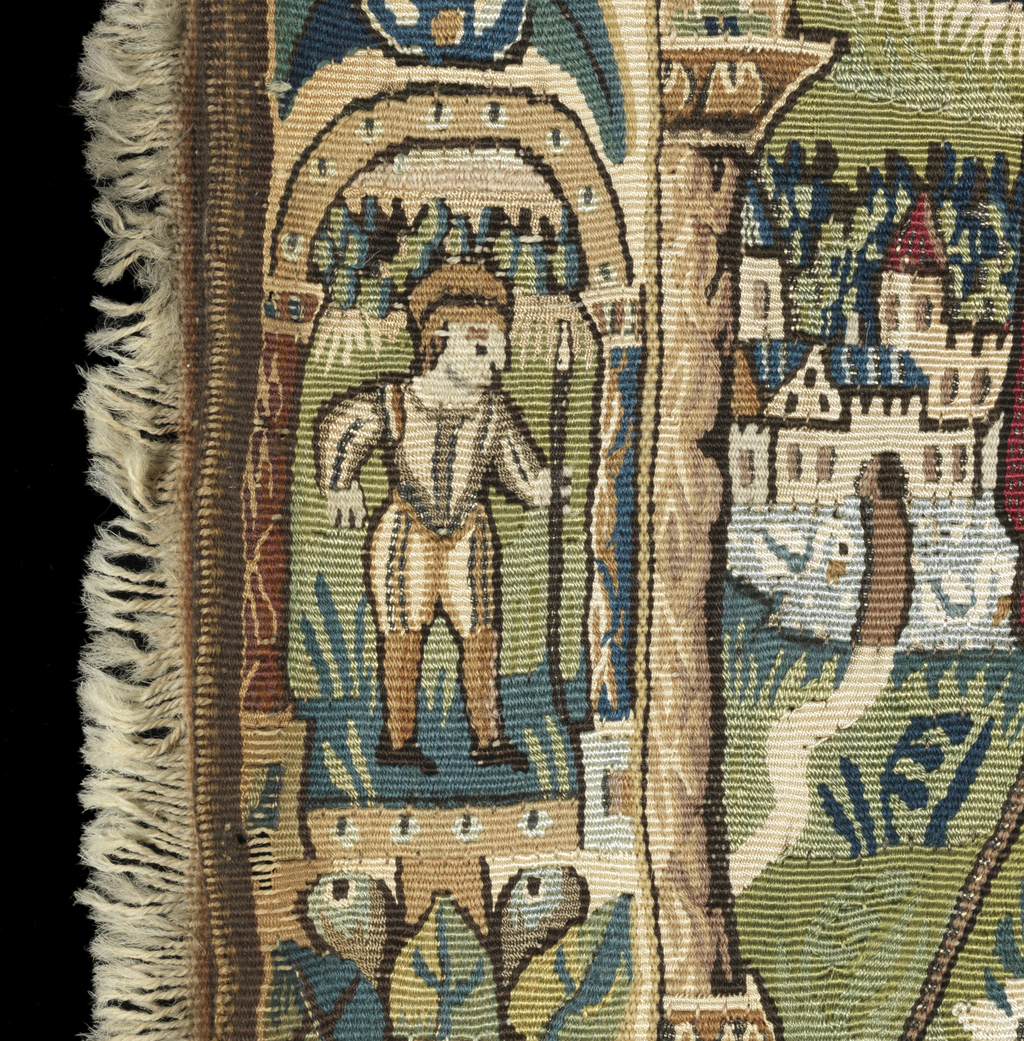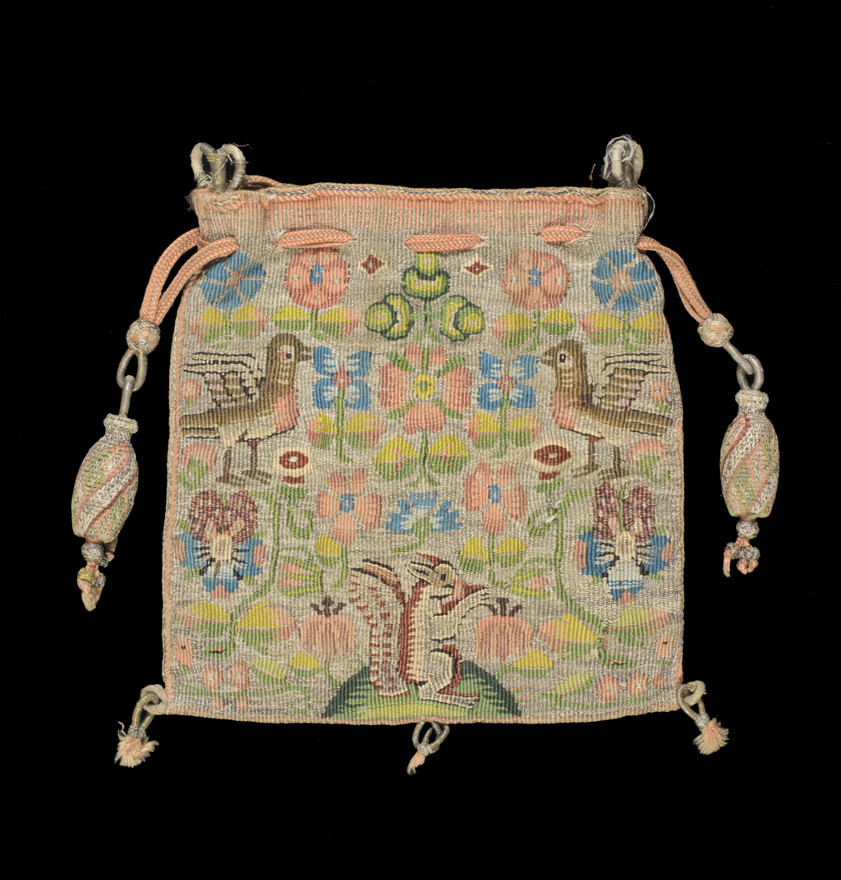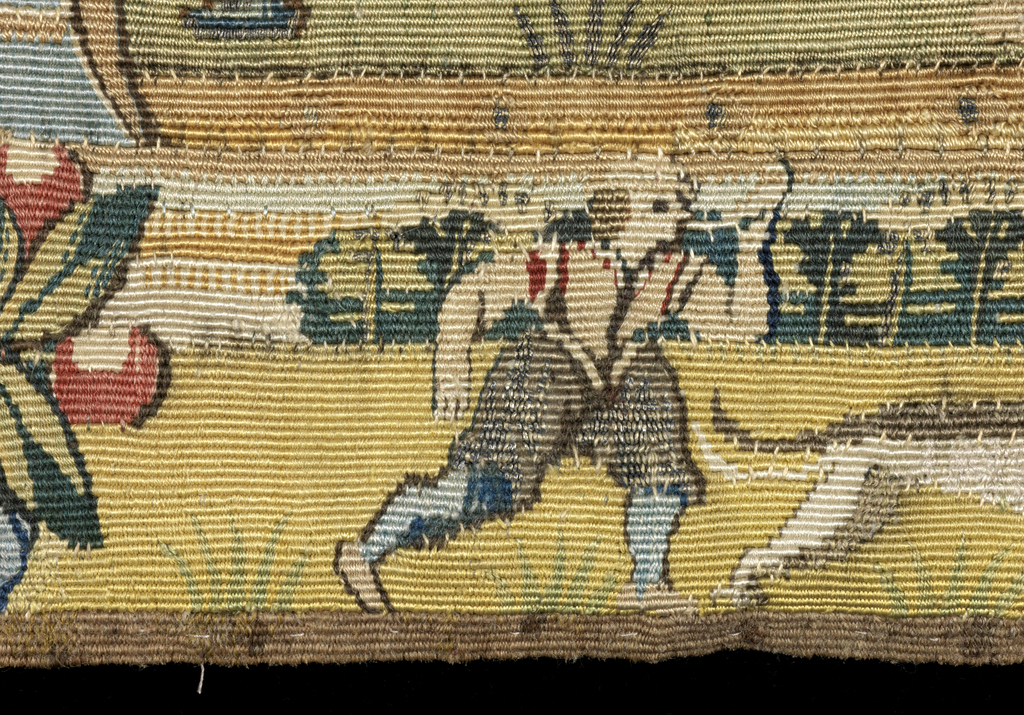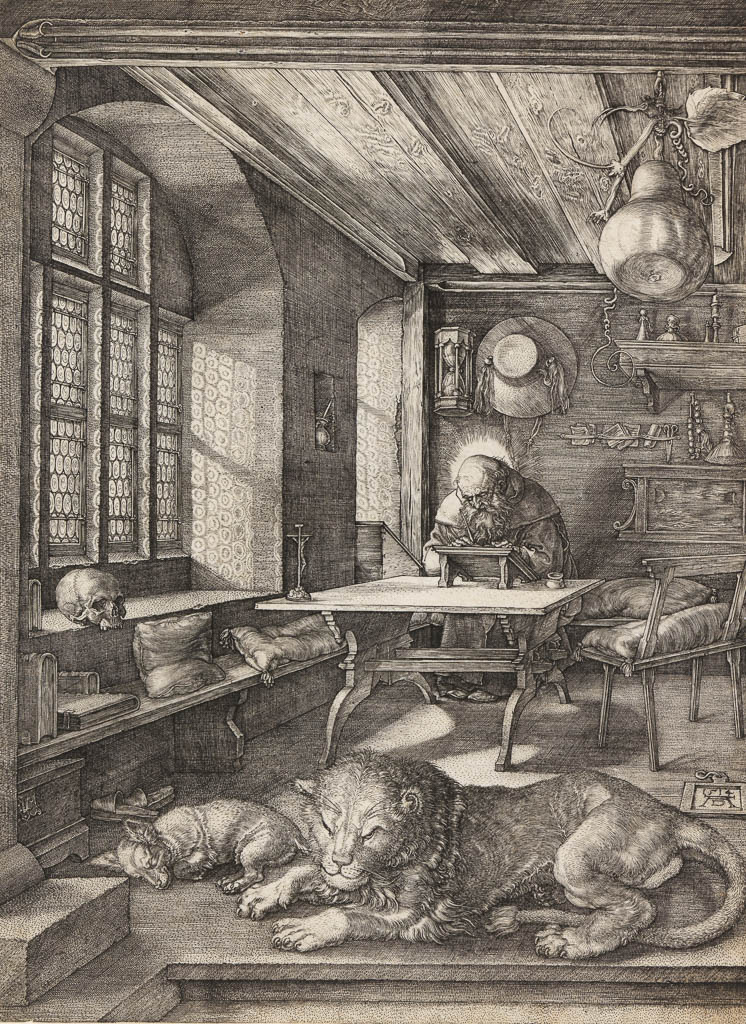
The word tapestry is often incorrectly used to describe embroidery, which is worked with a needle, but the correct meaning is in fact a method of weaving used to make the examples discussed here.
Tapestry weaving is a technique which produces a picture built up in many small areas of colour. Uncoloured threads, the warp, are covered by the coloured threads of the weft. The coloured threads are not continuous across the whole weave, as they are in cloth weaving.
The subject matter of tapestries was very varied; flowers, birds, animals and human figures were all popular.

People might be engaged in ordinary occupations like farming, hunting, woodcutting or a courtly picnic; their actions might tell a biblical or a classical story. Four, six or even more tapestries might be needed to cover the walls of a room. Each tapestry could illustrate a different scene, but the borders would be woven to the same pattern to unite the design across the walls.

Tapestry was woven by men, working in teams and often organised into guilds. Weavers might be engaged almost permanently by the same master or they might be recruited for only one job – either for a special large commission or for a tapestry wanted in a hurry.
Although a tapestry must be square or rectangular, it can be woven to any size, and thus is able to serve several purposes.
Large-scale weavings, which often told a narrative story, could be hung on walls to decorate a room; this also helped to insulate living spaces. And in an age where the nobility moved from residence to residence, their tapestries travelled with them; Queen Elizabeth, for example, took several favourite pieces with her on her travels around England.
Smaller examples of tapestry-woven items include covers for tables known as table carpets or cushion covers, useful to soften the hard surfaces of wooden stools and benches.

They could also be turned into fashion accessories, like purses or sweet bags.
Tapestry weaving was very slow work; it has been estimated that a man weaving a coarse tapestry might produce about one square metre every month, but if he were weaving high quality tapestry he might produce little more than half a square metre in six months. Tapestries therefore were always expensive commodities, even though most were woven only in wool. More opulent work could include silk and even gold and silver threads.




